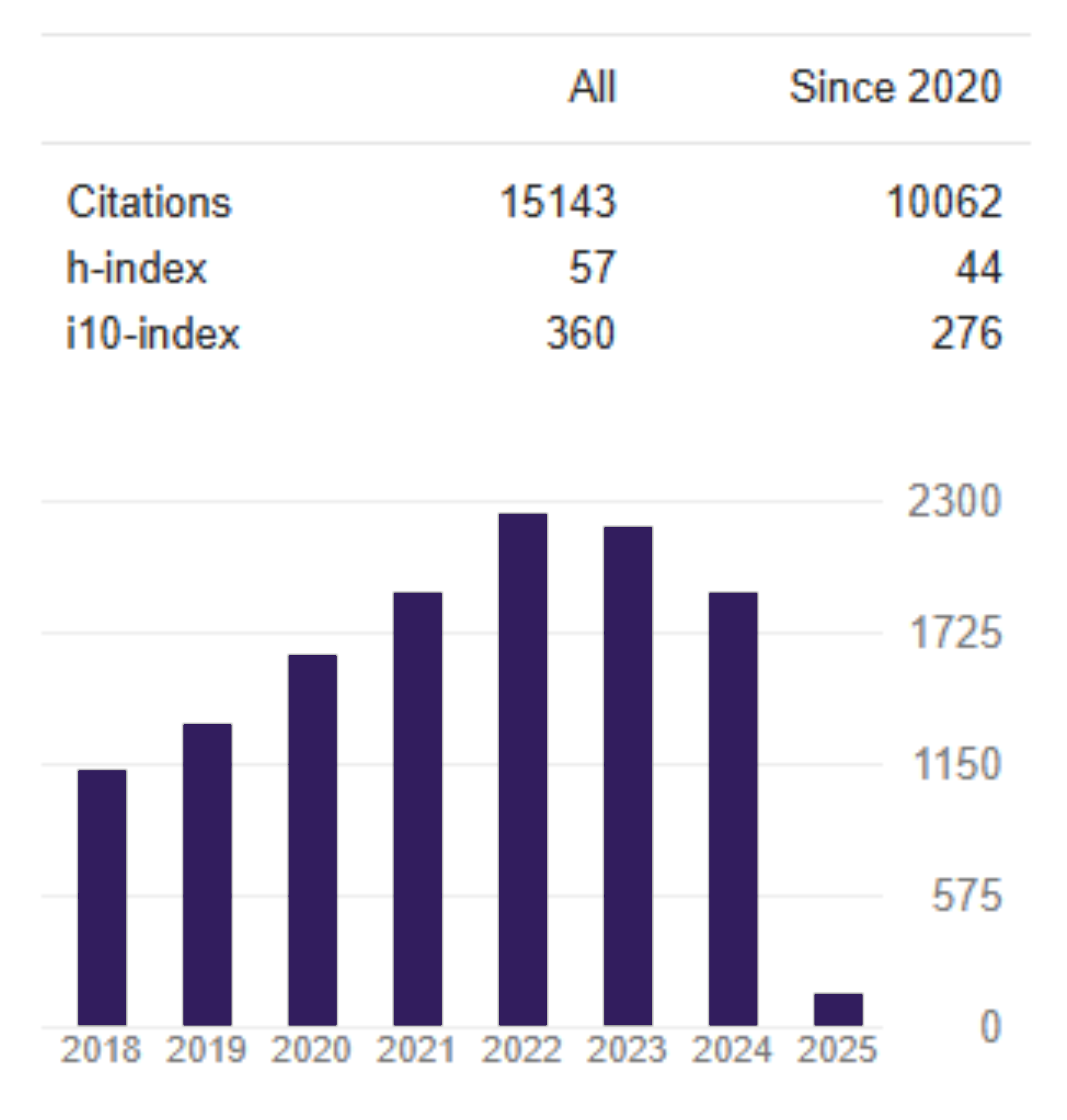The determinants of cash holdings and characteristics of the industrial business cycle in Indonesia
DOI:
https://doi.org/10.26905/jkdp.v23i4.3326Keywords:
Cash holdings, Dividend payout, Inflation, Managerial ownership, Operating cycleAbstract
One of the motives of a business doing cash holdings is the precautionary motive. The company tries to accumulate cash as a precautionary measure to cover unanticipated future necessities. We investigate to determine the factors that can affect company cash holdings that are associated with the characteristics of the industrial business cycle in Indonesia. The sample used is companies that meet the criteria (purposive sampling) and are grouped into different industrial characteristics, such as sensitive industry, defensive industry, growth industry, and cyclical industry. This enables to understand the behavior of cash holdings in a different industry. The analysis technique used is the data panel regression analysis. We find that each type of industry has different characteristics in maintaining its cash balance. For defensive industry and growth industry hold more cash than other industry, because they have strong growth opportunities. In addition, we find that inflation, managerial ownership, leverage, dividend policy, investment opportunities, and firm size have an effect on cash holdings while the operating cycle has no effect on cash holdings.
JEL Classification: G32, G35, G38
Downloads
References
Acharya, V. V., Almeida, H., & Campello, M. (2013). Aggregate risk and the choice between cash and lines of credit. The Journal of Finance, 68(5), 2059-2116. https://doi.org/10.1111/jofi.12056
Al-Najjar, B. (2013). The financial determinants of corporate cash holdings : Evidence from some emerging markets. International Business Review, 22(1), 77–88. https://doi.org/10.1016/j.ibusrev.2012.02.004
Anjum, S., & Malik, Q. A. (2013). Determinants of corporate liquidity - An analysis of cash holdings. IOSR Journal of Business and Management, 7(2), 94–100. https://doi.org/10.9790/487x-07294100
Bates, T. W., Kahle, K. M., & Stulz, R. M. (2009). Why do U.S. firms hold so much more cash than they used to?. The Journal of Finance, 64(5), 1985-2021. https://doi.org/10.1111/j.1540-6261.2009.01492.x
Bigelli, M., & Sánchez-Vidal, J. (2012). Cash holdings in private firms. Journal of Banking and Finance, 36(1), 26–35. https://doi.org/10.1016/j.jbankfin.2011.06.004
Bliss, B. A., Cheng, Y., & Denis, D. J. (2015). Corporate payout, cash retention, and the supply of credit: Evidence from the 2008-2009 credit crisis. Journal of Financial Economics, 115(3), 521–540. https://doi.org/10.1016/j.jfineco.2014.10.013
Chen, Y-R., & Chuang, W-T. (2009). Alignment or entrenchment ? Corporate governance and cash holdings in growing firms. Journal of Business Research, 62(11), 1200–1206. https://doi.org/10.1016/j.jbusres.2008.06.004
Dittmar, A., Mahrt-smith, J., & Servaes, H. (2003). International corporate governance and corporate cash holdings. The Journal of Financial and Quantitative Analysis, 38(1), 111–133. https://doi.org/10.2307/4126766
Faulkender, M. (2002). Cash holdings among small businesses. SSRN Electronic Journal. https://doi.org/10.2139/ssrn.305179
Ferreira, M. A., Custodio, C., & Raposo, C. C. (2005). Cash holdings and business conditions. SSRN Electronic Journal. https://doi.org/10.2139/ssrn.608664
Ferreira, M. A., & Vilela, A. S. (2004). Why do firms hold cash? Evidence from EMU Countries. European Financial Management, 10(2), 295–319. https://doi.org/10.1111/j.1354-7798.2004.00251.x
Jinkar, R. T. (2013). Analisa faktor- faktor penentu kebijakan. Mini Economica, 42, 129–146.
Jones, S., Laan, S. V. D., Frost, G., & Loftus, J. (2008). The investment performance of socially responsible investment funds in Australia. Journal of Business Ethics, 80(2), 181–203. https://doi.org/10.1007/s10551-007-9412-6
Kariuki, S. N., & Namusonge, P. G. S. (2015). Determinants of corporate cash holdings: evidence from private manufacturing firms in Kenya. International Journal of Advanced Research in Management and Social Sciences, 4(6), 15–33.
Keynes J. M. (1936). The General Theory of Employment, Interest, and Money. Palgrave Macmillan. https://doi.org/10.1007/978-3-319-70344-2_1
Kim, J., Kim, H., & Woods, D. (2011). Determinants of corporate cash-holding levels: An empirical examination of the restaurant industry. International Journal of Hospitality Management, 30(3), 568–574. https://doi.org/10.1016/j.ijhm.2010.10.004
Kusnadi, Y. (2003). Corporate cash holdings, board structure, and ownership concentration: evidence from Singapore. Working Paper. CiteSeer.
Myers, S. C. (1984). The capital structure puzzle. The Journal of Finance, 39(3), 575–592. https://doi.org/10.1111/j.1540-6261.1984.tb03646.x
Opler, T., Pinkowitz, L., Stulz, R., & Williamson, R. (1999). The determinants and implications of corporate cash holdings. Journal of Financial Economics, 52(1), 3–46.
https://doi.org/10.1016/s0304-405x(99)00003-3
Ozkan, A., & Ozkan, N. (2004). Corporate cash holdings: An empirical investigation of UK companies. Journal of Banking and Finance, 28(9), 2103–2134. https://doi.org/10.1016/j.jbankfin.2003.08.003
Riordan, D. A., & Riordan, M. P. (2009). Inflation and financial statement analysis in the international accounting classroom. Journal of Teaching in International Business, 20(2), 174–187. https://doi.org/10.1080/08975930902827890
Shleifer, A., & Vishny, R. W. (1997). A Survey of Corporate Governance. The Journal of Finance, LII(2), 737–783. https://doi.org/10.3386/w5554
Subramaniam, V., Tang, T. T., Yue, H., & Zhou, X. (2011). Firm structure and corporate cash holdings. Journal of Corporate Finance, 17(3), 759–773. https://doi.org/10.1016/j.jcorpfin.2010.06.002
Sutrisno, B., & Gumanti, T. A. (2016). Pengaruh krisis keuangan global dan karakteristik perusahaan terhadap cash holding perusahaan di Indonesia. Jurnal Siasat Bisnis, 20(2), 130–142. https://doi.org/10.20885/jsb.vol20.iss2.art3
Denis, D. J., & Sibilkov, V. (2009). Financial constraints, investment, and the value of cash holdings. The Review of Financial Studies, 23(1), 247–269. https://doi.org/10.1093/rfs/hhp031
Wang, Y., Ji, Y., Chen, X., & Song, C. (2013). Inflation, operating cycle, and cash holdings. China Journal of Accounting Research, 7(4), 263–276. https://doi.org/10.1016/j.cjar.2013.07.001
Wasiuzzaman, S. (2014). Analysis of corporate cash holdings of firms in Malaysia. Journal of Asia Business Studies, 8(2), 118–135. https://doi.org/10.1108/jabs-10-2012-0048
Yeboah, B., & Agyei, S. K. (2012). Working capital management and cash holdings of banks in Ghana. European Journal of Business and Management, 4(13), 120–131.
Zulhilmi, A. (2015). Pengaruh growth opportunity, net working capital, cash conversion cycle, dan leverage terhadap cash holding perusahaan. Skripsi. Universitas Islam Indonesia.
Downloads
Additional Files
Published
Issue
Section
License

This work is licensed under a Creative Commons Attribution-ShareAlike 4.0 International License.



